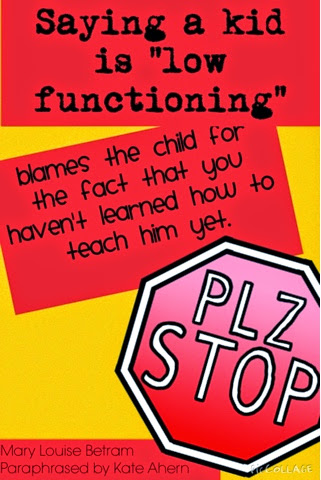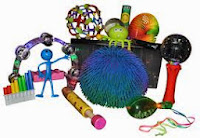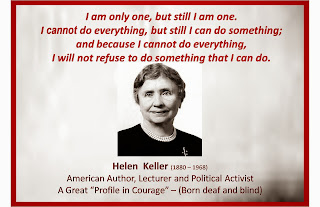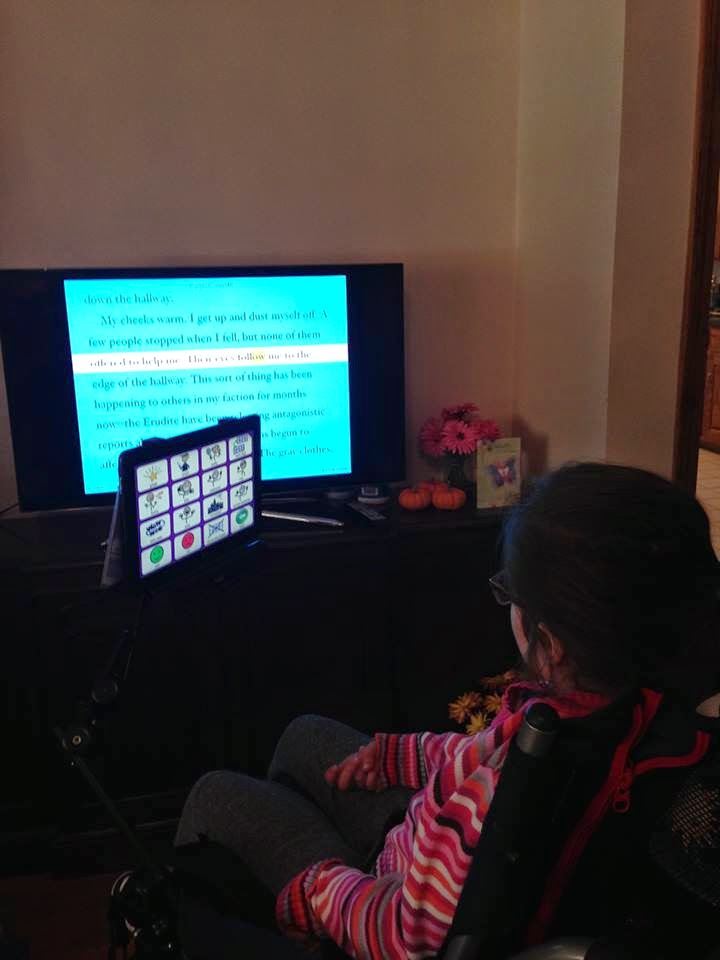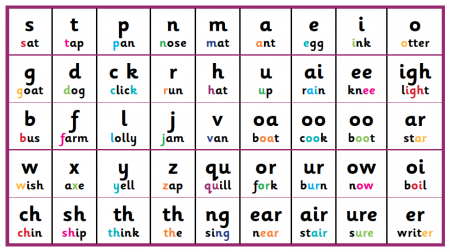This guest post is written by Mary Louise Betram. Ms. Betram is an educator has specialized in Angelman Syndrome other learners with Complex Communication Needs (CNN). She presents and consults internationally on Angelman Syndrome, learners with complex communication needs and literacy.
I hate the
terms/labels "low functioning" and "high functioning" because they don't
tell me anything
about the WHOLE child, and I'm ALL about looking at the child as a whole person. "Complex Communication Needs" (CCN) tells me a lot about the child I am about to meet, "Cerebral Palsy" gives me an idea about any movement or motor planning difficulties and I can keep this in the back of my mind during my dynamic assessment. "Autism Spectrum Disorder" (ASD) gives me clues though I still have no idea or judgments about the particular child I am about to encounter. "Angelman syndrome" (AS) tells me a lot, though I know the "Google version" is very different to the reality.
"Low functioning" tells me nothing and gives me no clues EXCEPT to tell me about the adults who work with the child. When I read or am told that this child is "low functioning" it tells me right away that the adults in this child's life have not done enough problem solving to discover what supports the child needs in order for him or her to be successful. Calling a child "low functioning" is, to me, actually an adult saying "He's too tricky, we have no idea what he needs and when he needs it".
Children who are labeled 'high functioning' are the kids who are relatively easily to problem solve. These are the kids that make it more obvious what supports they need in order to be successful.
If you always do the weekly supermarket shopping with a list and you leave the list at home one week, the week when relatives are visiting and some have random allergies and you can't remember what they are, you are going to appear quite low functioning as you slowly walk around the store, stopping to rack your memory about what you need, and you will probably make a lot of mistakes and come home with the wrong things.
We all need supports in order to be successful.
If the criteria for being a "high functioning" husband was related to his fine motor abilities when packing the dishwasher and folding the washing, and brushing the kids' hair and making even ponytails, then many husbands I know would be labeled low functioning. That label wouldn't tell me about that husband's incredible cooking capabilities, or his ability to create whimsical bedtime stories for his kids. The label doesn't tell me about that husband as a whole person.
I can cook a mean scrambled eggs on toast. I am a "High Functioning" Domestic Goddess when I have had a proper sleep and no travel. Ask me to make scrambled eggs when I get home to Perth (Australia) from Los Angeles (USA) and it is a different story. I will most likely drop an egg, there will be eggshell in the scramble, and I will probably be unable to string a coherent sentence together and I will most probably be crying from my jet-lag. Anyone walking in could label me low functioning. I would also appear extremely low functioning if I was asked to cook 400 servings of scrambled eggs in the Sheraton Kitchen on a busy Sunday with 25 chefs running around doing their jobs and all looking incredible high functioning.
 I am very high functioning in terms of language,
comprehension, and I can navigate myself around many cities very well.
However, if you dropped me into the center of Baghdad I would present as
low functioning. I would be terrified, unable to understand the
language or communicate in a language people around me would readily
understand, and I would be unaware of the expectations and of the
consequences of my actions, even small actions such as how I walked or
how I approached someone. I would be overwhelmed by sensory input -
sights, smells, sounds. I would be a mess.
I am very high functioning in terms of language,
comprehension, and I can navigate myself around many cities very well.
However, if you dropped me into the center of Baghdad I would present as
low functioning. I would be terrified, unable to understand the
language or communicate in a language people around me would readily
understand, and I would be unaware of the expectations and of the
consequences of my actions, even small actions such as how I walked or
how I approached someone. I would be overwhelmed by sensory input -
sights, smells, sounds. I would be a mess.
If, however, you dropped me in the center of Baghdad with a SAS Regiment (Air Force Regiment)
that had briefed me beforehand, gave me access to language I could use and understand, explained to me exactly what I would see, what I was to do, and how I was to do it then I could appear quite high functioning. If I had the supports I needed to enable me to be successful, even in just making it from the helicopter drop point to the base, I could be seen by observers to be quite high functioning. It is ALL about the supports.
 Many of our students who are labeled "low functioning" are struggling to
survive in their own
Many of our students who are labeled "low functioning" are struggling to
survive in their own
Baghdad. Without a military briefing, without a map, without understanding the purpose for being there, unable to understand or process the language and with no way of asking for help. How cruel of us to do that to children.
Children who are labeled "low functioning" are the kids who are the tricky ones to problem solve. They don't, "throw you any bones". They are often consistently inconsistent and the supports that work one day just don't work the next. These are the kids that need the strongest supports from aided language stimulation, a robust full language AAC systems, alternative pencils, visual supports, sensory strategies, and an engaging curriculum. If we just say, "well, he's low functioning, so that's why he can't do xyz" then it is OUR fault he cannot do xyz. What do the adults need to do in order for the child to at least have access to be successful at even trying to do xyz?
We have a duty to these children to support the team to shift the blame away from the child. I brutally honest with many of the teams I am called in to work with. If they say "Hannah is low functioning" then I say, "When you use that term, you are blaming Hannah for the things she cannot do. I guarantee that Hannah does the best she can with what she has, and that the things she does - communications, behaviours, movements etc - are for a reason. If Hannah has learned that it is no longer worth trying to do things then that is our
fault because the adults in her life have essentially told her to stop bothering, to give up. Let's look at what Hannah needs to be able to do and then let's think BIG about how we can support her to be successful doing it." It is about US, not the children.
We are the adults and, frankly, we are paid to support these children to be successful. If a child labeled "Low Functioning" has Cortical Vision Impairment
(CVI) and nobody on his team has any idea about what that is then the
likelihood of that child being able to use his vision successfully, and
to improve his vision in that class, are slim to none, and people will
still see that child as 'low functioning'. When staff learn about CVI
and relate that information to their student suddenly they can see that
child as strategic in his movements and in his use of vision. Suddenly
that child appears quite "clever" and "high functioning". Suddenly the
child is able to see things. Suddenly that child is able to demonstrate
his knowledge. Did the child magically change overnight into a "high
functioning" person with cerebral palsy? Nope.
What did change was the knowledge, expectations, and skills of the adults. The adult now understand and implement the best support for the child and "suddenly" the child could engage with the lessons. It is not about the children. It is about us and the supports we provide.
I am not expecting that any person on the teams that I consult with become an expert in Angelman Syndrome, Complex Communication Needs, Epilepsy, medications, CVI, apraxia, dyspraxia, AAC, PODD, or Aided Language Input. I AM expecting the team to have an understanding of how these things apply to their student and how they can use this knowledge to enable their student to be successful. I AM expecting the team to problem solve.
There are many children who appear "high functioning" in some environments and "low functioning"
in others. Rather than just saying, "Jack loves art class so that's why he behaves and does his work properly" we need to look at what is it about art class that supports Jack to be successful there. What is it about art class that is missing in his other classes. How are classes where he cannot cope and where his challenging behaviours and communication frustrations are most evident different from art? Often it is not simply because, "Jack loves art". It can be the expectations of the teacher, the way the teacher explains things, the visual supports and gestures she naturally uses as she teaches. It may be where he sits in the art room, the acoustics of the room, or the lighting. We owe it to the child to critically analyze what is it about the art class that works for Jack and how can we put those supports into other areas in his life so that he can be successful there too?
I hope more and more professionals stop using the terms "low functioning' and "high functioning" and that more parents and professionals are empowered to talk about the damage these labels can cause. At the beginning of my presentations and workshops I talk about two of the adults with Angelman that I work. Peter is in his early twenties, is not fully toilet trained, lives with other men, has many challenging behaviours, especially around food. Peter uses some AAC, sign, gesture, and loud vocalisations. Peter loves trains and cake. Peter likes to destroy computers, televisions, and other electronics. I then show some photos of Peter. People look at Peter surrounded by food and broken computers and they say 'Yup, he has Angelman'. People comment, "he's probably deletion" (what is often considered to be the more severe form of Angelman) and "I've had low functioning students with Angelman like that at my school".
Then I tell them about Bob. He also has Angelman and is 22. He attends community college where
he is studying a certificate in Music. Bob plays the drums, composes music using composition software on the Mac. Bob uses a 70 per page PODD book and the 60 cell PODD Pageset on the iPad Compass App. Bob has a girlfriend who he loves dearly. He has always been included in mainstream schools and lives with his mates that he has known since childhood. Bob has his own business and presents to University Business students about his business and his life. Bob attends literacy classes to improve his literacy. People say "are you sure he has Angelman?" and "He must be ube3a or ICD. Maybe he's Mosaic?" and "Wow, he's so high functioning".
I then show some photos of Bob.
They are the same photos as Peter.
Bob and Peter are the same person.
How we talk about someone matters.
Originally published on AGOSCI listserve, November 2014
Reprinted with permission and slight modifications.
 |
| labels aren't for people |
about the WHOLE child, and I'm ALL about looking at the child as a whole person. "Complex Communication Needs" (CCN) tells me a lot about the child I am about to meet, "Cerebral Palsy" gives me an idea about any movement or motor planning difficulties and I can keep this in the back of my mind during my dynamic assessment. "Autism Spectrum Disorder" (ASD) gives me clues though I still have no idea or judgments about the particular child I am about to encounter. "Angelman syndrome" (AS) tells me a lot, though I know the "Google version" is very different to the reality.
"Low functioning" tells me nothing and gives me no clues EXCEPT to tell me about the adults who work with the child. When I read or am told that this child is "low functioning" it tells me right away that the adults in this child's life have not done enough problem solving to discover what supports the child needs in order for him or her to be successful. Calling a child "low functioning" is, to me, actually an adult saying "He's too tricky, we have no idea what he needs and when he needs it".
Children who are labeled 'high functioning' are the kids who are relatively easily to problem solve. These are the kids that make it more obvious what supports they need in order to be successful.
- Child trying to hold a pen and is scribbling letters? Easy to problem solve - fine motor supports, handwriting supports, OT, keyboarding. Done.
- Child with ASD and CCN who demonstrates he can navigate an iPad like an Apple Genius? Relatively simple AAC assessment resulting in dedicated device being prescribed.
- Verbal child with CP who attends mainstream school and is academically at grade level but has anxiety and stress during transitions? Ask child what is stressful and see what they say, develop a plan preparing for transitions, a consistent language to guide child through transitions, and enable child to have an element of control during transitions.
If you always do the weekly supermarket shopping with a list and you leave the list at home one week, the week when relatives are visiting and some have random allergies and you can't remember what they are, you are going to appear quite low functioning as you slowly walk around the store, stopping to rack your memory about what you need, and you will probably make a lot of mistakes and come home with the wrong things.
We all need supports in order to be successful.
If the criteria for being a "high functioning" husband was related to his fine motor abilities when packing the dishwasher and folding the washing, and brushing the kids' hair and making even ponytails, then many husbands I know would be labeled low functioning. That label wouldn't tell me about that husband's incredible cooking capabilities, or his ability to create whimsical bedtime stories for his kids. The label doesn't tell me about that husband as a whole person.
I can cook a mean scrambled eggs on toast. I am a "High Functioning" Domestic Goddess when I have had a proper sleep and no travel. Ask me to make scrambled eggs when I get home to Perth (Australia) from Los Angeles (USA) and it is a different story. I will most likely drop an egg, there will be eggshell in the scramble, and I will probably be unable to string a coherent sentence together and I will most probably be crying from my jet-lag. Anyone walking in could label me low functioning. I would also appear extremely low functioning if I was asked to cook 400 servings of scrambled eggs in the Sheraton Kitchen on a busy Sunday with 25 chefs running around doing their jobs and all looking incredible high functioning.
 I am very high functioning in terms of language,
comprehension, and I can navigate myself around many cities very well.
However, if you dropped me into the center of Baghdad I would present as
low functioning. I would be terrified, unable to understand the
language or communicate in a language people around me would readily
understand, and I would be unaware of the expectations and of the
consequences of my actions, even small actions such as how I walked or
how I approached someone. I would be overwhelmed by sensory input -
sights, smells, sounds. I would be a mess.
I am very high functioning in terms of language,
comprehension, and I can navigate myself around many cities very well.
However, if you dropped me into the center of Baghdad I would present as
low functioning. I would be terrified, unable to understand the
language or communicate in a language people around me would readily
understand, and I would be unaware of the expectations and of the
consequences of my actions, even small actions such as how I walked or
how I approached someone. I would be overwhelmed by sensory input -
sights, smells, sounds. I would be a mess. If, however, you dropped me in the center of Baghdad with a SAS Regiment (Air Force Regiment)
that had briefed me beforehand, gave me access to language I could use and understand, explained to me exactly what I would see, what I was to do, and how I was to do it then I could appear quite high functioning. If I had the supports I needed to enable me to be successful, even in just making it from the helicopter drop point to the base, I could be seen by observers to be quite high functioning. It is ALL about the supports.
 Many of our students who are labeled "low functioning" are struggling to
survive in their own
Many of our students who are labeled "low functioning" are struggling to
survive in their own Baghdad. Without a military briefing, without a map, without understanding the purpose for being there, unable to understand or process the language and with no way of asking for help. How cruel of us to do that to children.
Children who are labeled "low functioning" are the kids who are the tricky ones to problem solve. They don't, "throw you any bones". They are often consistently inconsistent and the supports that work one day just don't work the next. These are the kids that need the strongest supports from aided language stimulation, a robust full language AAC systems, alternative pencils, visual supports, sensory strategies, and an engaging curriculum. If we just say, "well, he's low functioning, so that's why he can't do xyz" then it is OUR fault he cannot do xyz. What do the adults need to do in order for the child to at least have access to be successful at even trying to do xyz?
We have a duty to these children to support the team to shift the blame away from the child. I brutally honest with many of the teams I am called in to work with. If they say "Hannah is low functioning" then I say, "When you use that term, you are blaming Hannah for the things she cannot do. I guarantee that Hannah does the best she can with what she has, and that the things she does - communications, behaviours, movements etc - are for a reason. If Hannah has learned that it is no longer worth trying to do things then that is our
fault because the adults in her life have essentially told her to stop bothering, to give up. Let's look at what Hannah needs to be able to do and then let's think BIG about how we can support her to be successful doing it." It is about US, not the children.
What did change was the knowledge, expectations, and skills of the adults. The adult now understand and implement the best support for the child and "suddenly" the child could engage with the lessons. It is not about the children. It is about us and the supports we provide.
I am not expecting that any person on the teams that I consult with become an expert in Angelman Syndrome, Complex Communication Needs, Epilepsy, medications, CVI, apraxia, dyspraxia, AAC, PODD, or Aided Language Input. I AM expecting the team to have an understanding of how these things apply to their student and how they can use this knowledge to enable their student to be successful. I AM expecting the team to problem solve.
There are many children who appear "high functioning" in some environments and "low functioning"
in others. Rather than just saying, "Jack loves art class so that's why he behaves and does his work properly" we need to look at what is it about art class that supports Jack to be successful there. What is it about art class that is missing in his other classes. How are classes where he cannot cope and where his challenging behaviours and communication frustrations are most evident different from art? Often it is not simply because, "Jack loves art". It can be the expectations of the teacher, the way the teacher explains things, the visual supports and gestures she naturally uses as she teaches. It may be where he sits in the art room, the acoustics of the room, or the lighting. We owe it to the child to critically analyze what is it about the art class that works for Jack and how can we put those supports into other areas in his life so that he can be successful there too?
I hope more and more professionals stop using the terms "low functioning' and "high functioning" and that more parents and professionals are empowered to talk about the damage these labels can cause. At the beginning of my presentations and workshops I talk about two of the adults with Angelman that I work. Peter is in his early twenties, is not fully toilet trained, lives with other men, has many challenging behaviours, especially around food. Peter uses some AAC, sign, gesture, and loud vocalisations. Peter loves trains and cake. Peter likes to destroy computers, televisions, and other electronics. I then show some photos of Peter. People look at Peter surrounded by food and broken computers and they say 'Yup, he has Angelman'. People comment, "he's probably deletion" (what is often considered to be the more severe form of Angelman) and "I've had low functioning students with Angelman like that at my school".
Then I tell them about Bob. He also has Angelman and is 22. He attends community college where
he is studying a certificate in Music. Bob plays the drums, composes music using composition software on the Mac. Bob uses a 70 per page PODD book and the 60 cell PODD Pageset on the iPad Compass App. Bob has a girlfriend who he loves dearly. He has always been included in mainstream schools and lives with his mates that he has known since childhood. Bob has his own business and presents to University Business students about his business and his life. Bob attends literacy classes to improve his literacy. People say "are you sure he has Angelman?" and "He must be ube3a or ICD. Maybe he's Mosaic?" and "Wow, he's so high functioning".
I then show some photos of Bob.
They are the same photos as Peter.
Bob and Peter are the same person.
How we talk about someone matters.
Originally published on AGOSCI listserve, November 2014
Reprinted with permission and slight modifications.
